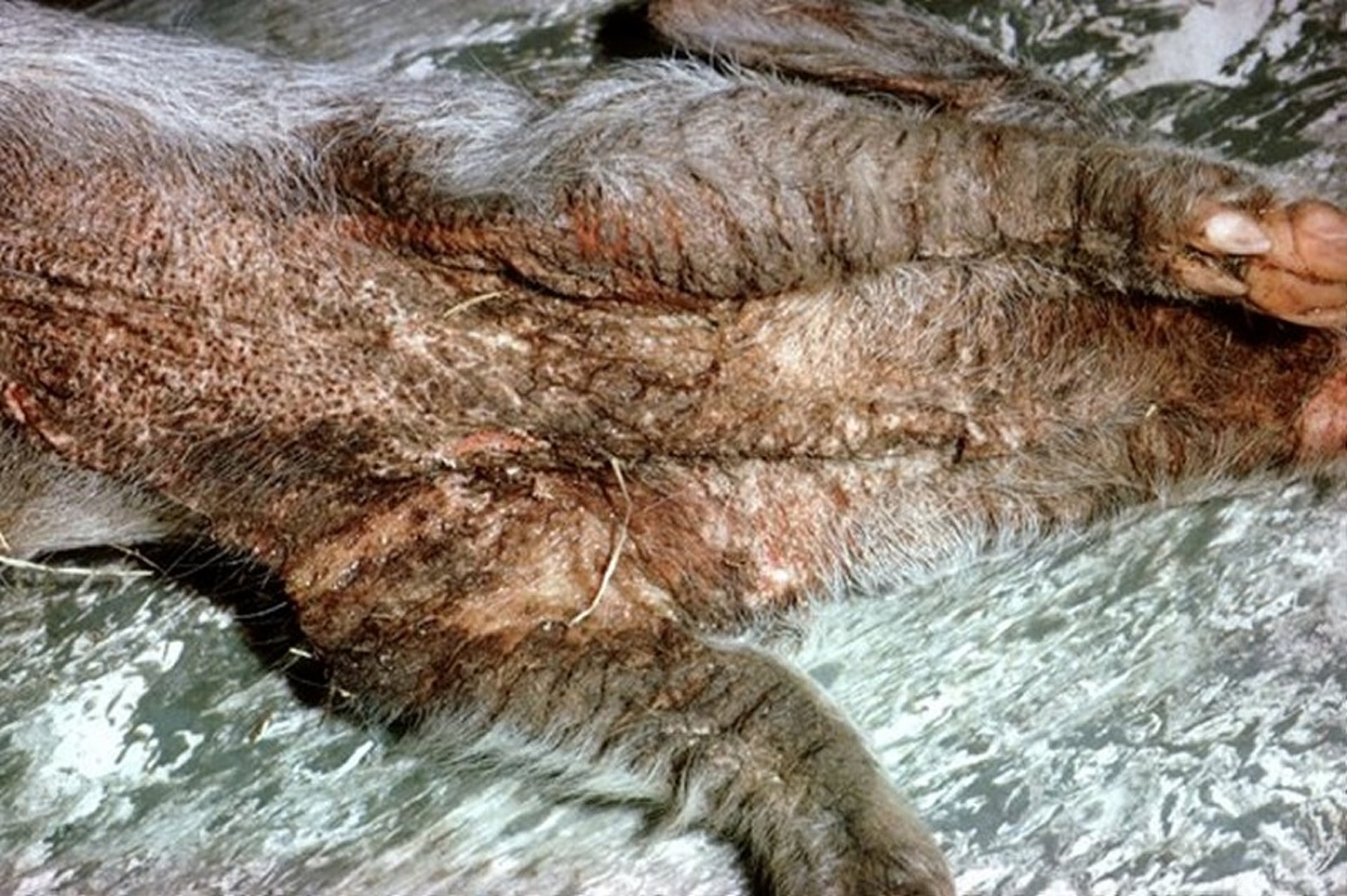Courtesy of Dr. Ranald D. A. Cameron.
Courtesy of Dr. Ranald D. A. Cameron.
Parakeratosis is a nutritional deficiency disease of 6- to 16-week-old pigs characterized by lesions of the superficial layers of the epidermis. It results from a zinc deficiency or inadequate absorption of zinc due to an excess of calcium, phytates, or other chelating agents in the diet. Predisposing factors include rapid growth, deficiency of essential fatty acids, or malabsorption due to gastrointestinal disease. Parakeratosis is uncommon in commercial swine unless errors have been made in diet formulation; however, it may occur in backyard pigs. The widespread use of high zinc levels in feed to prevent enteric disease in weaned pigs has further reduced the likelihood of the disease.
Clinical signs are limited to lesions on the skin, although mild lethargy, anorexia, and delayed growth may occur in severe cases; there is little, if any, pruritus. The lesions are symmetrically distributed areas of excessive and abnormal keratinization of the epidermis with the formation of horny scale and fissures. Brown spots or papules first appear on the ventrolateral areas of the abdomen and inner thighs, pasterns, fetlocks, hocks, and tail regions. These lesions coalesce to involve larger areas until the entire body may be covered. The scale is horny, dry, and usually easily removed. Occasionally, secondary infection of the cracks and fissures causes them to fill with dark, sticky exudate and debris, which may resemble exudative epidermitis; however, this usually occurs in younger piglets.
Chronic sarcoptic mange and deficiencies of B vitamins or iodine must be considered in the differential diagnosis. Clinical signs, results of examination of skin biopsy samples, and low serum concentration of zinc and decreased alkaline phosphatase activity help confirm the diagnosis.
Very good outcomes can be obtained by adjusting the dietary intake of calcium or zinc or both. Nursery pig diets should contain 0.8%–0.85% calcium (with standardized total tract digestible phosphorus of 0.4%–0.45%) and 100 mg/kg of zinc, assuming daily feed intake of 280–500 g. Grower diets should contain 0.6%–0.65% calcium and 60 ppm zinc, whereas finisher diets should contain 0.45%–0.5% calcium and 50 ppm zinc. Sow and boar diets should contain 0.9% calcium and 150 ppm zinc. Correction of the deficiency results in rapid recovery.

